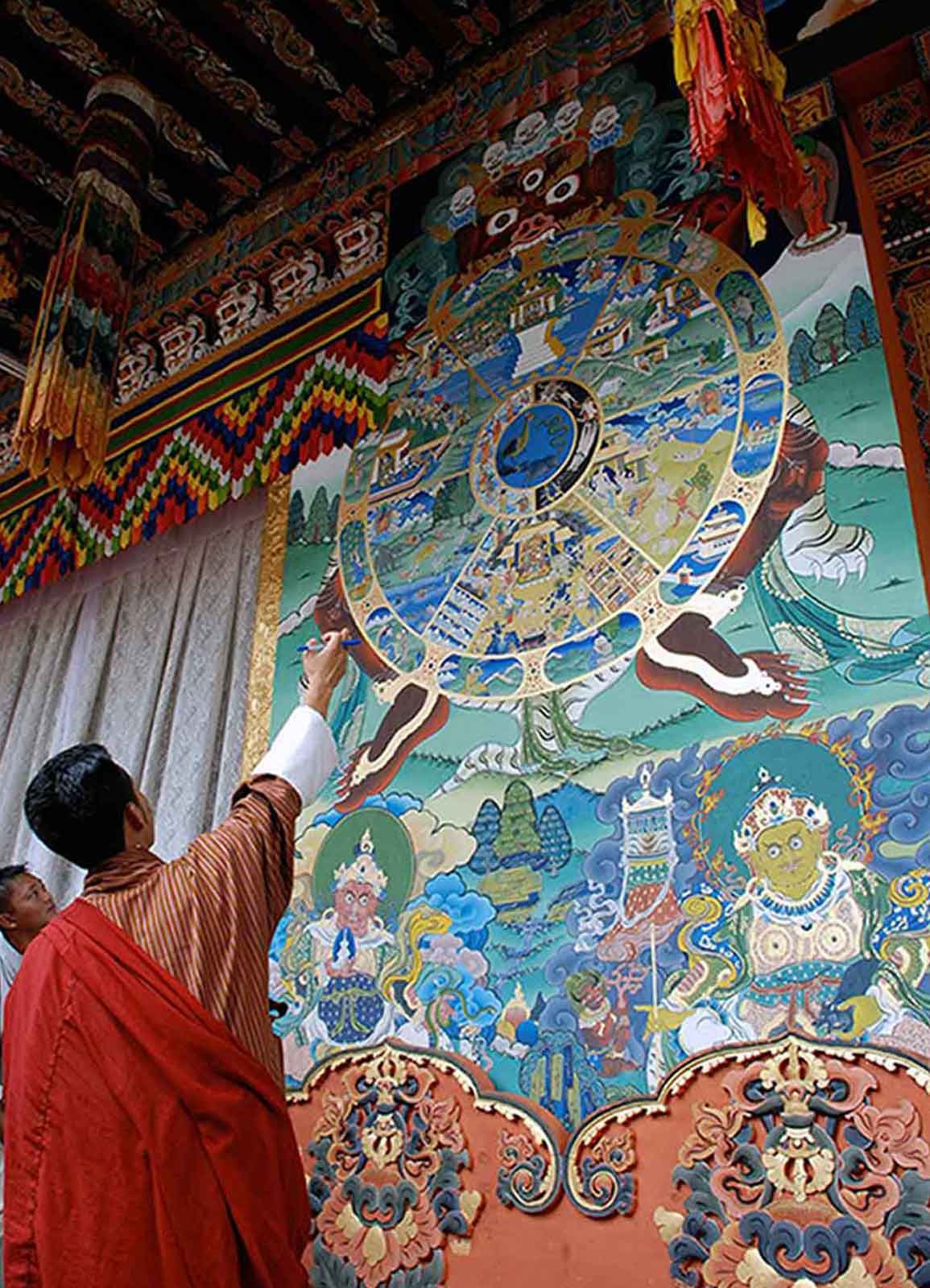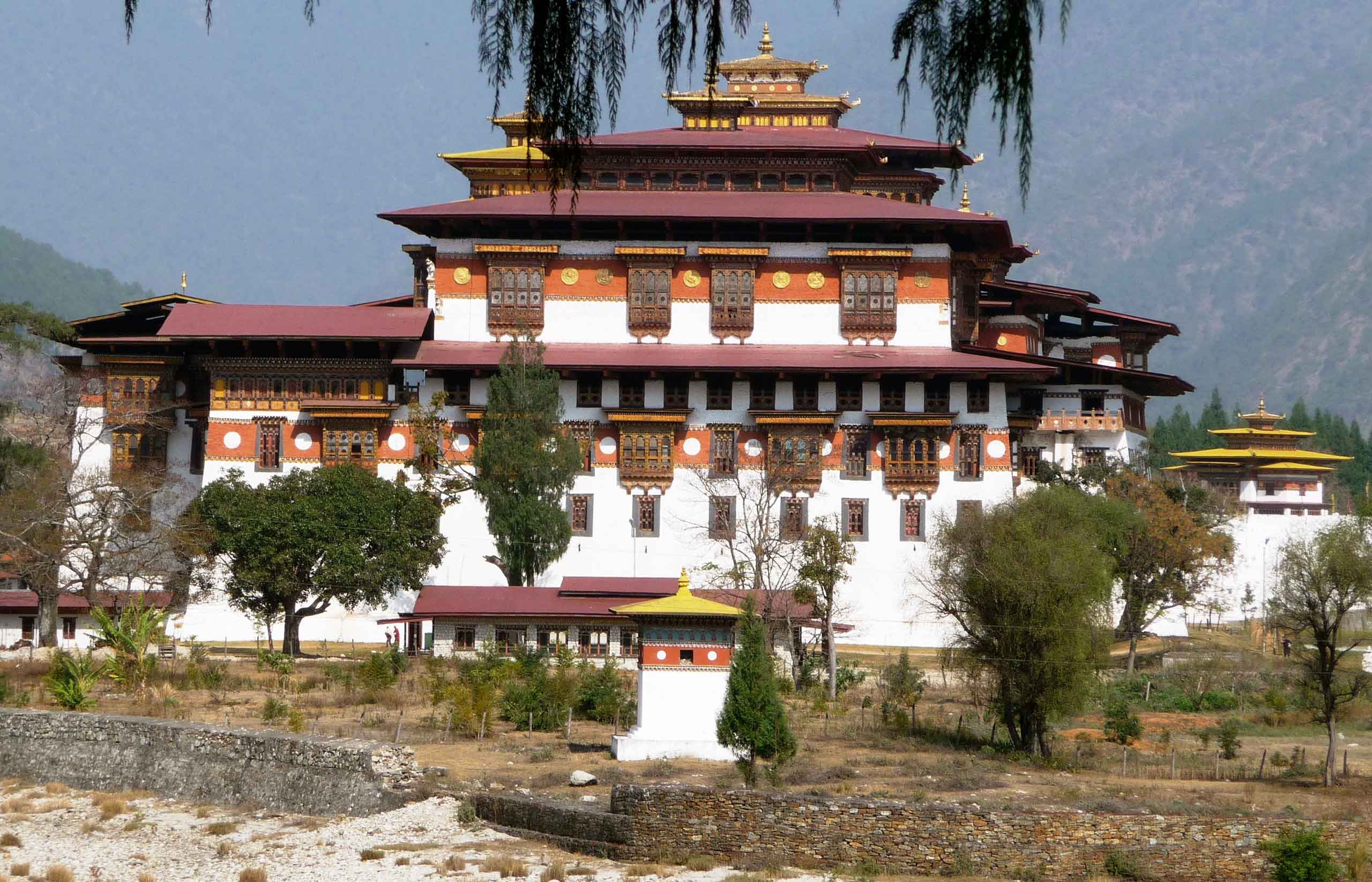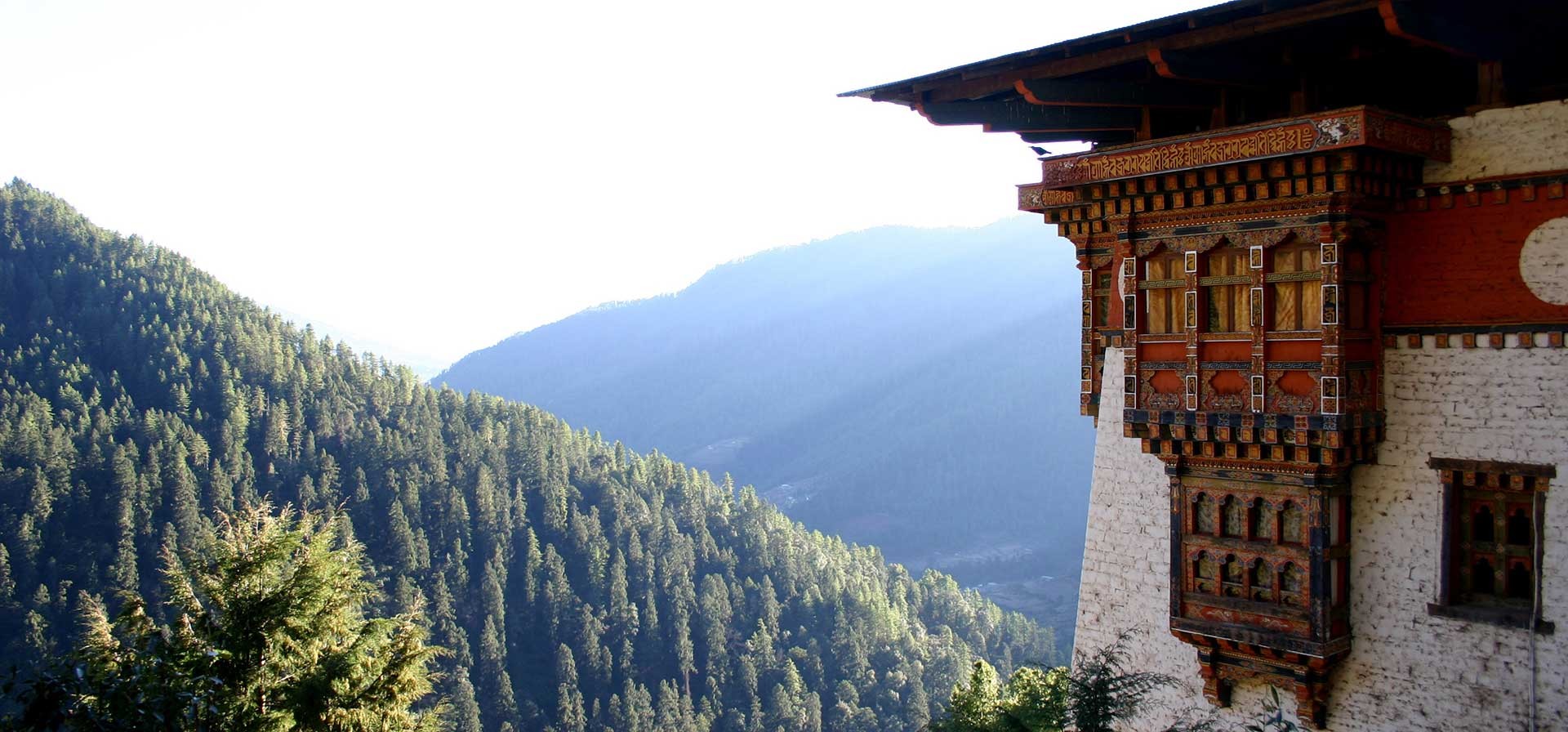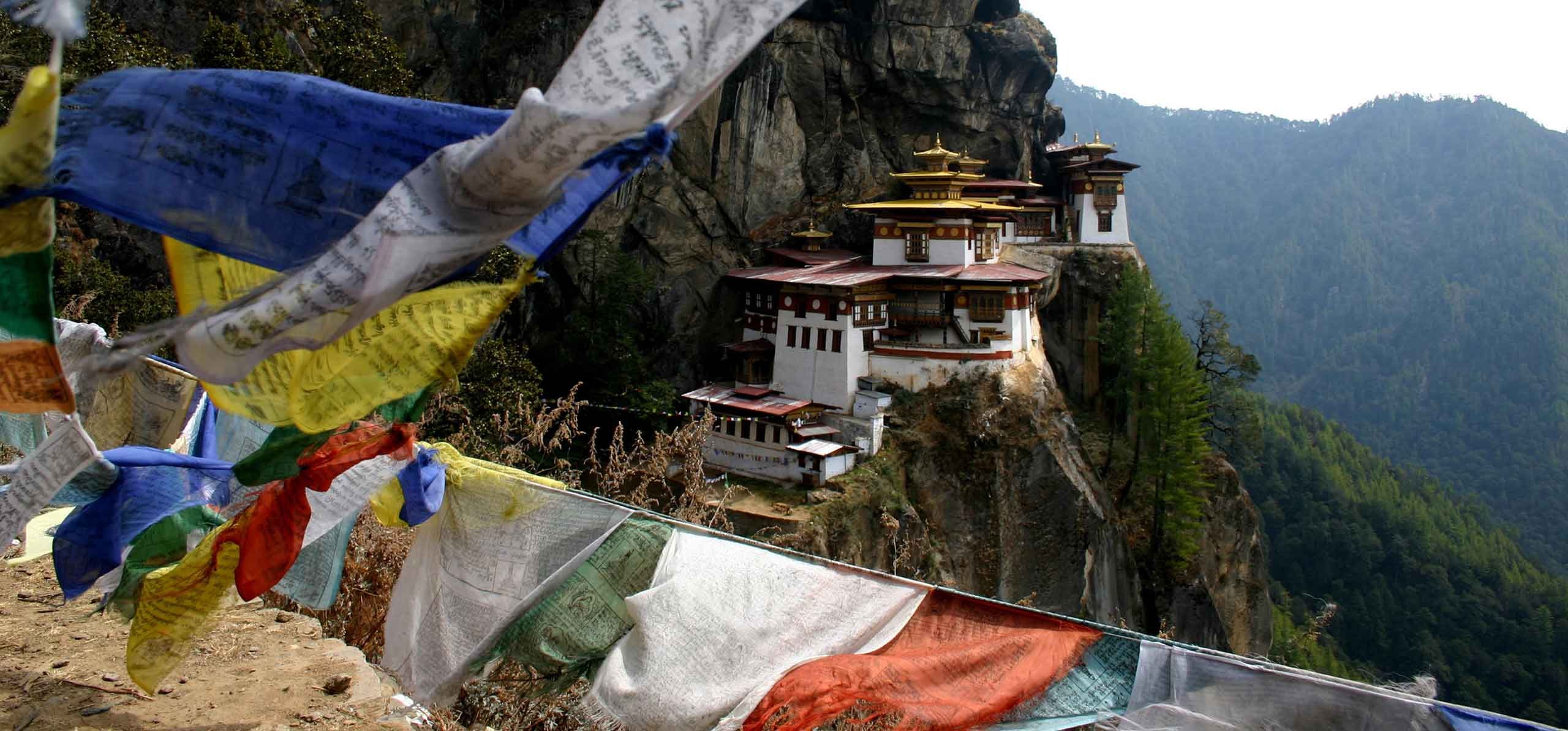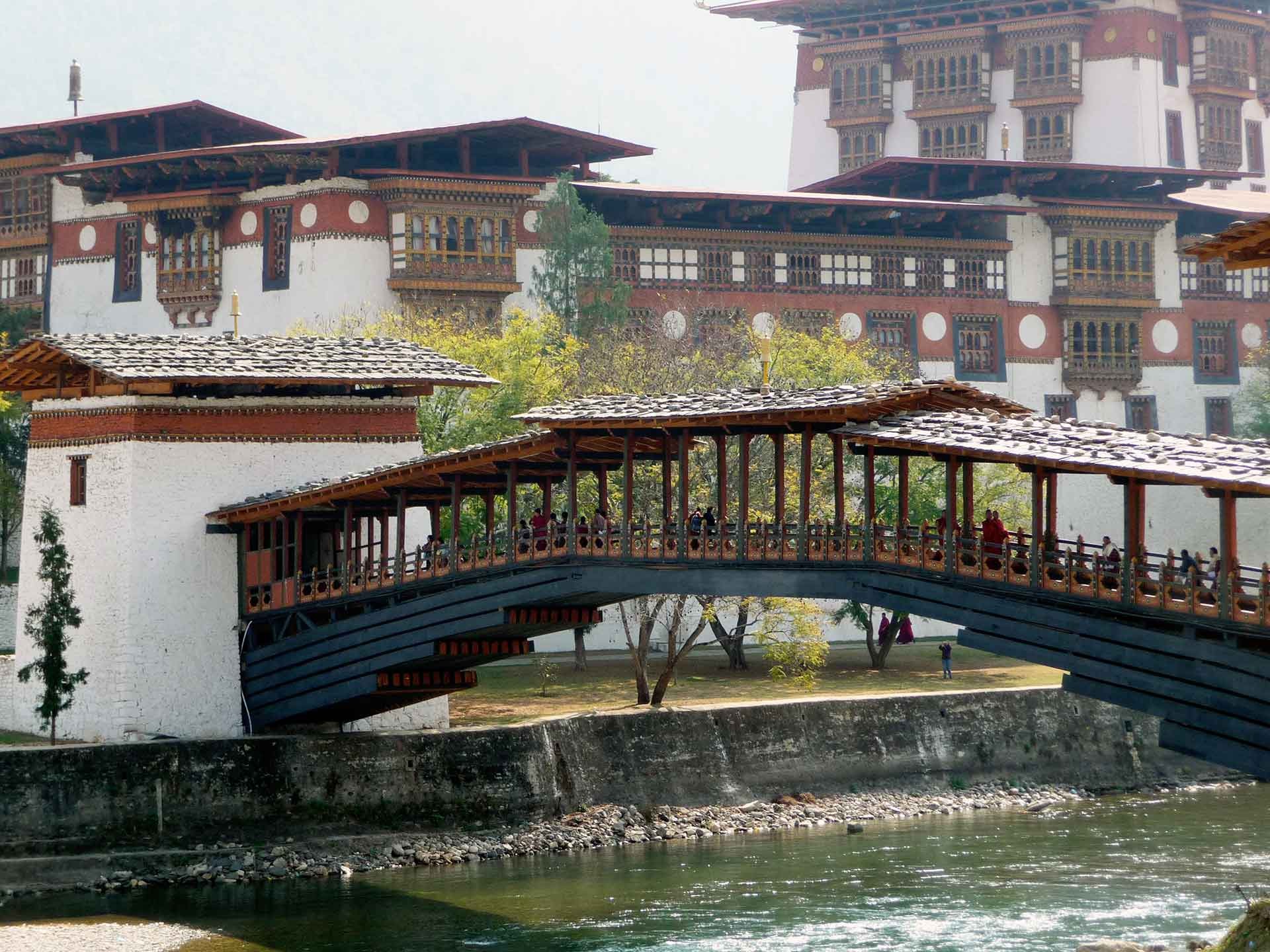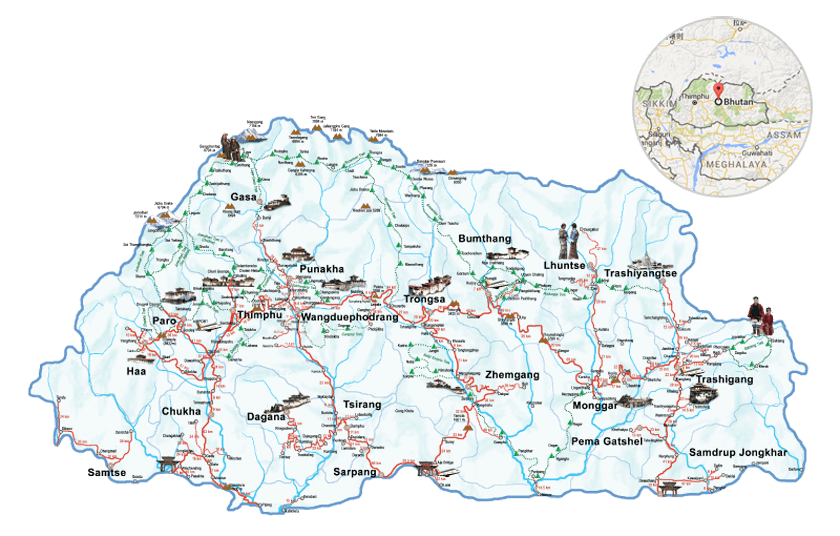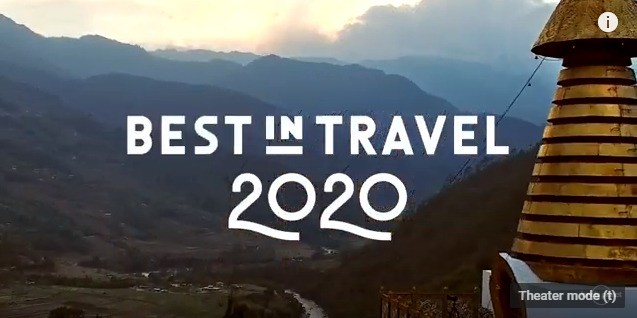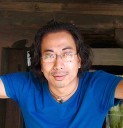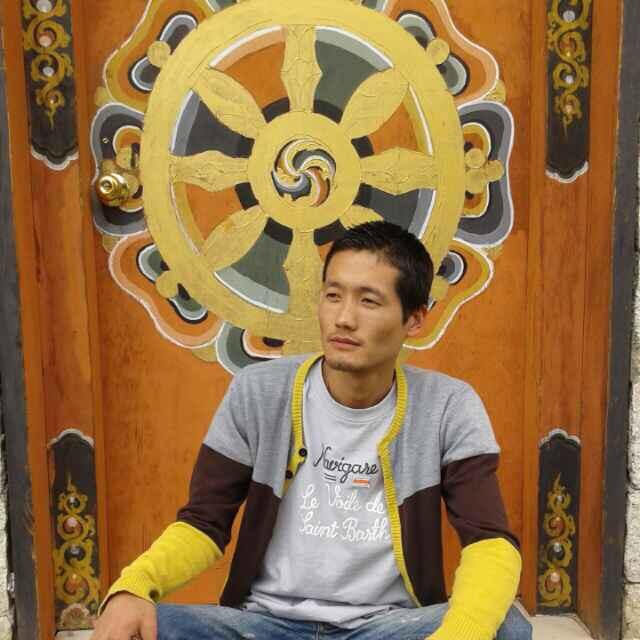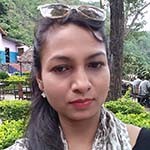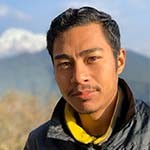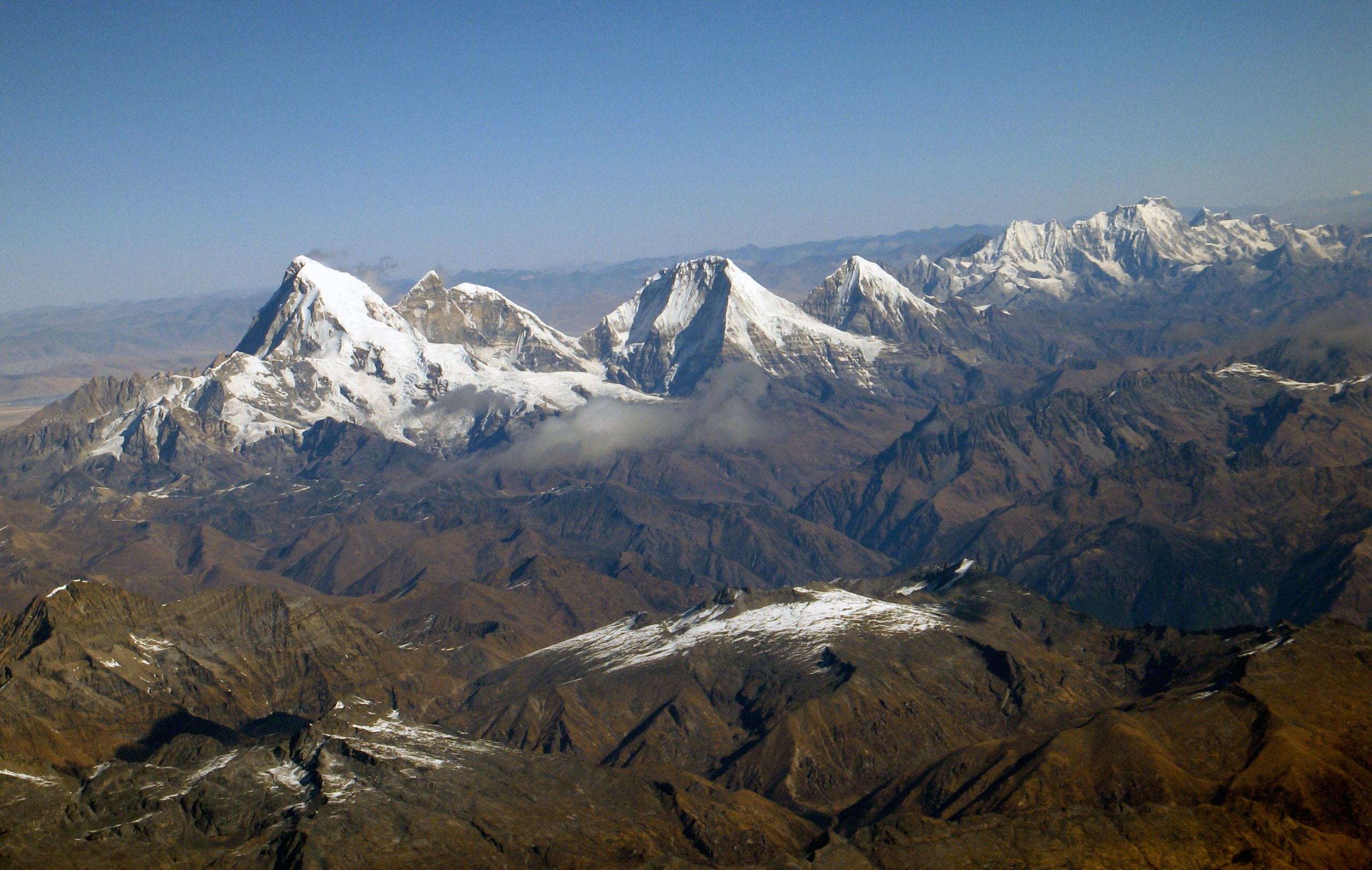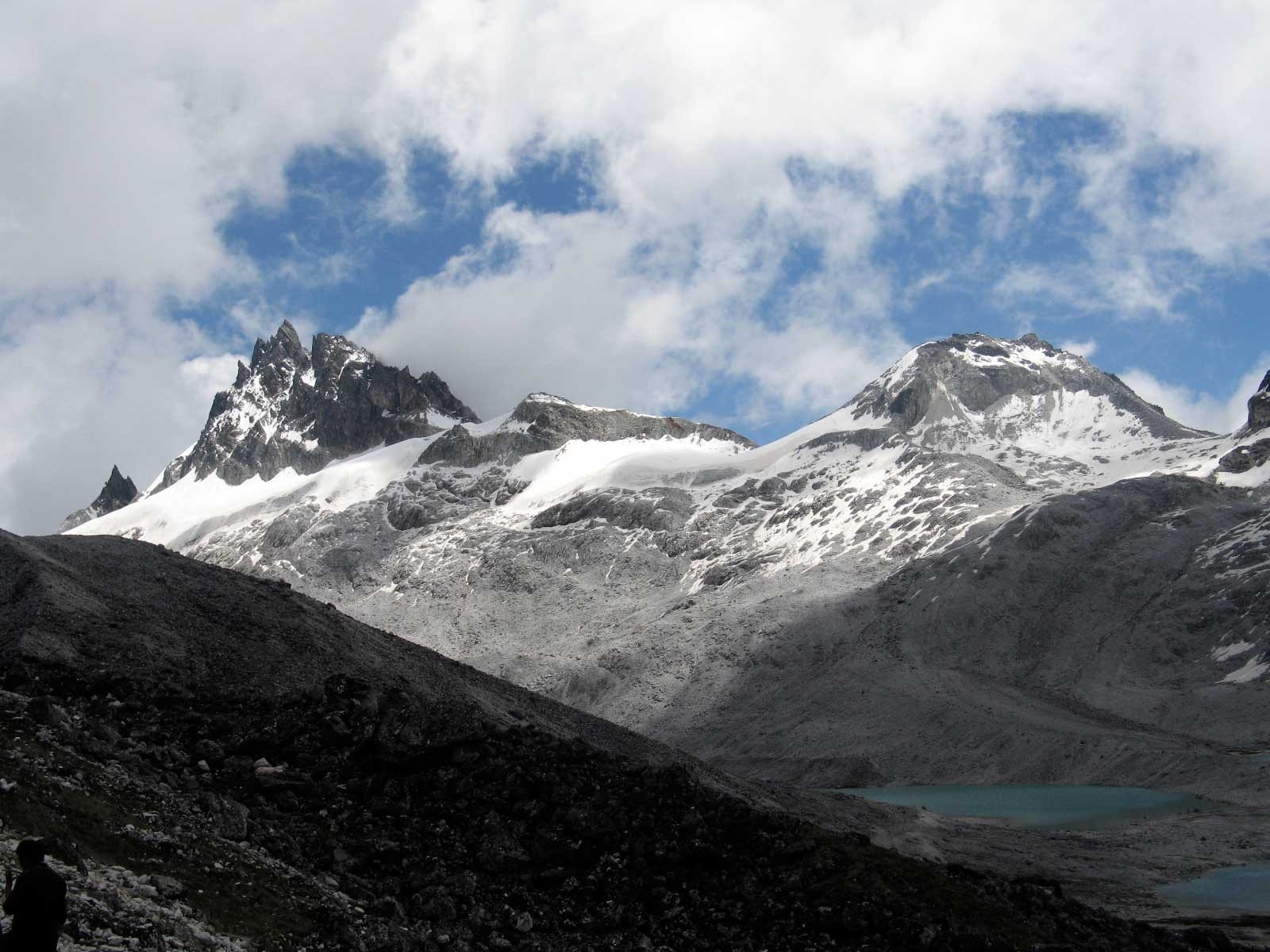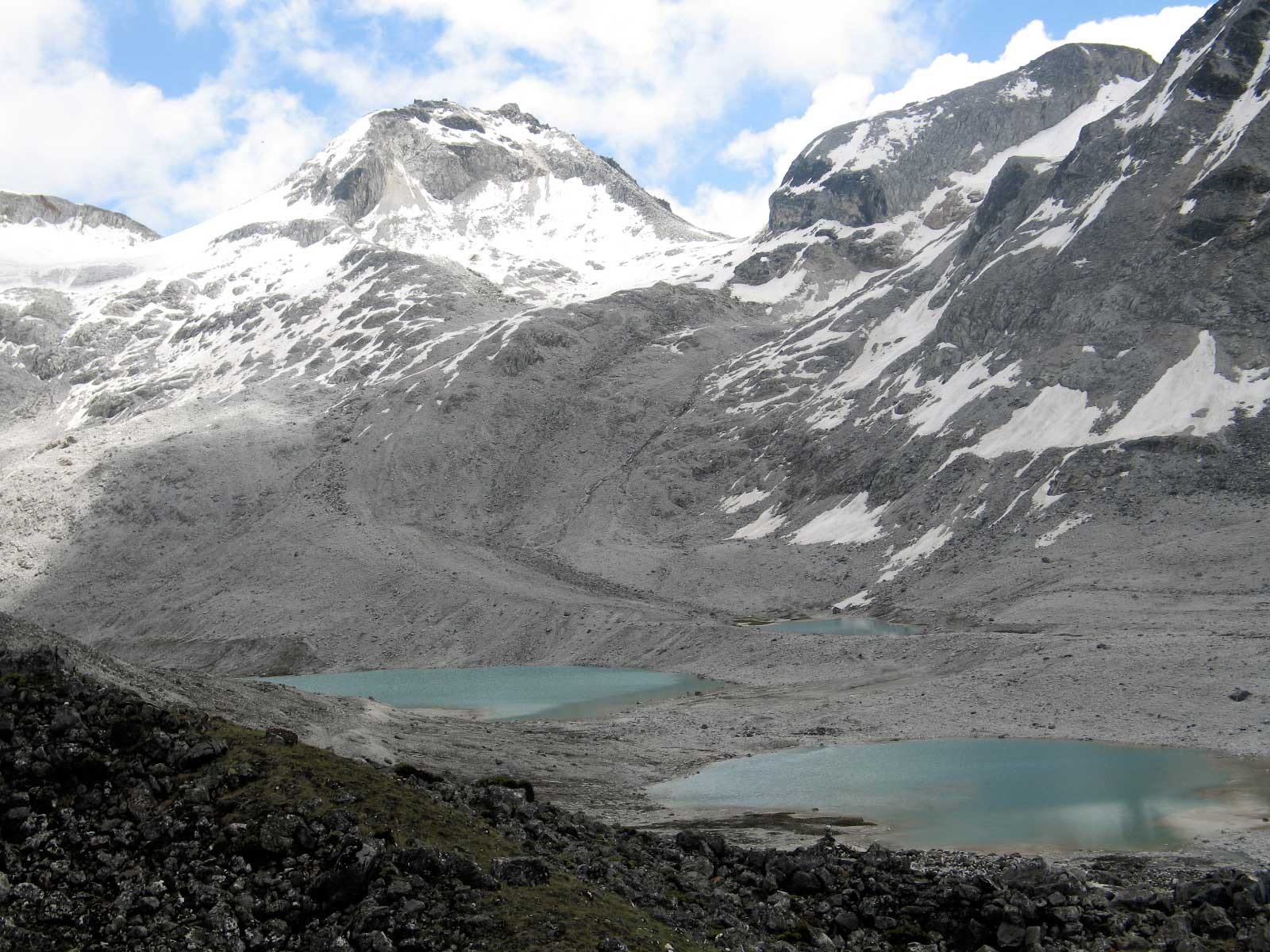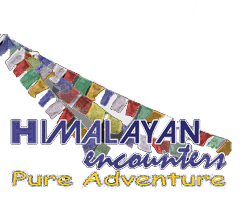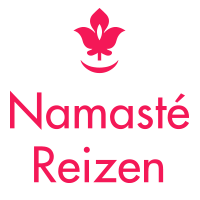Day 6: Paro & Environs
Our long-awaited morning hike up to the famed Taktsang Monastery (Tiger’s nest), an iconic Bhutanese landmark. The upward climb will take around 2 hours and stunning views compensate for the energy expended. Local lore claims that it is here that Guru Padmasambava landed on the back of a Tiger in the 8th century, and then proceeded to meditate for three months. In 1684 a monastery was built on the site to commemorate the event. Midway on the descent, we take lunch at the terraces of a Government run cafeteria facing the Tiger’s Nest.
The remainder of the day has in store for us:
Drukgyel Dzong: Located 15km to the north, this ruined dzong, with a picturesque village nestling below its ramparts, was built in 1646 by Shabdrung Ngawang Namgyal to commemorate his victory over the Tibetan invaders. Though largely destroyed by fire in 1951, the towering outer walls and central keep remain imposing sights. On a clear day, there is a splendid view of Mt. Jhomolhari from the approach road.
Rinpung Dzong:
The “fortress of the mountain of jewels“ was also built in 1646 by Shabdrung Ngawang Namgyal on a hill above the township. The approach to the Dzong is through a traditional covered bridge (called the Nemi Zam) and then up a paved stone path running alongside the imposing outer walls. The Valley’s annual springtime religious festival, the Paro Tsechu, takes place in the courtyard of the dzong and on the dance ground on the hillside above.
Ta Dzong:
On a ridge immediately above Rinpung Dzong is Ta Dzong, built as a watchtower to protect the Dzong. (“Ta” means “to see” in Dzongkha, so the watchtower of a dzong is always called a “Ta dzong”). Because of their function, watchtowers are always round in shape. In 1968, Paro’s Ta Dzong was inaugurated as the National Museum. It now holds a fascinating collection of art, relics, religious thangkha paintings, an exquisite range of Bhutanese postage stamps, coins and handicrafts, together with a small natural history
